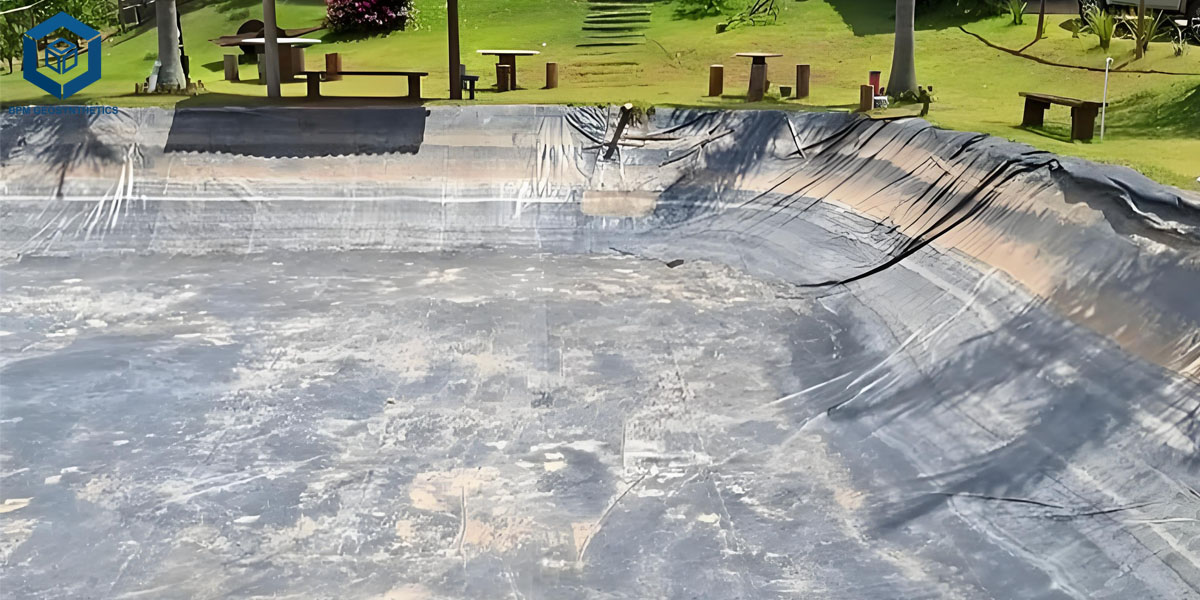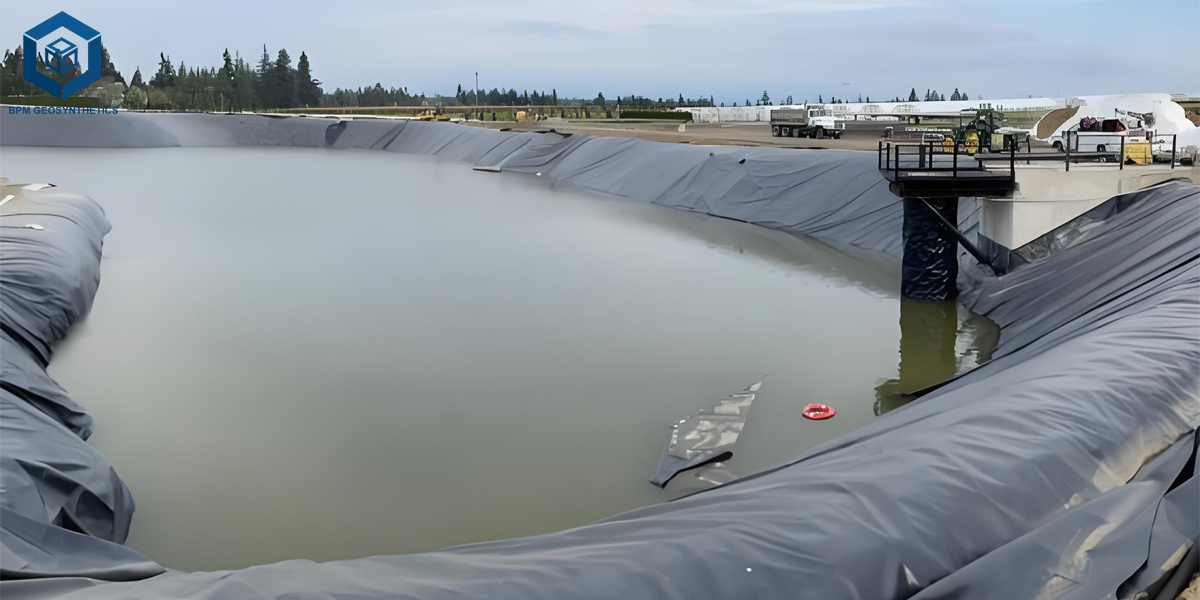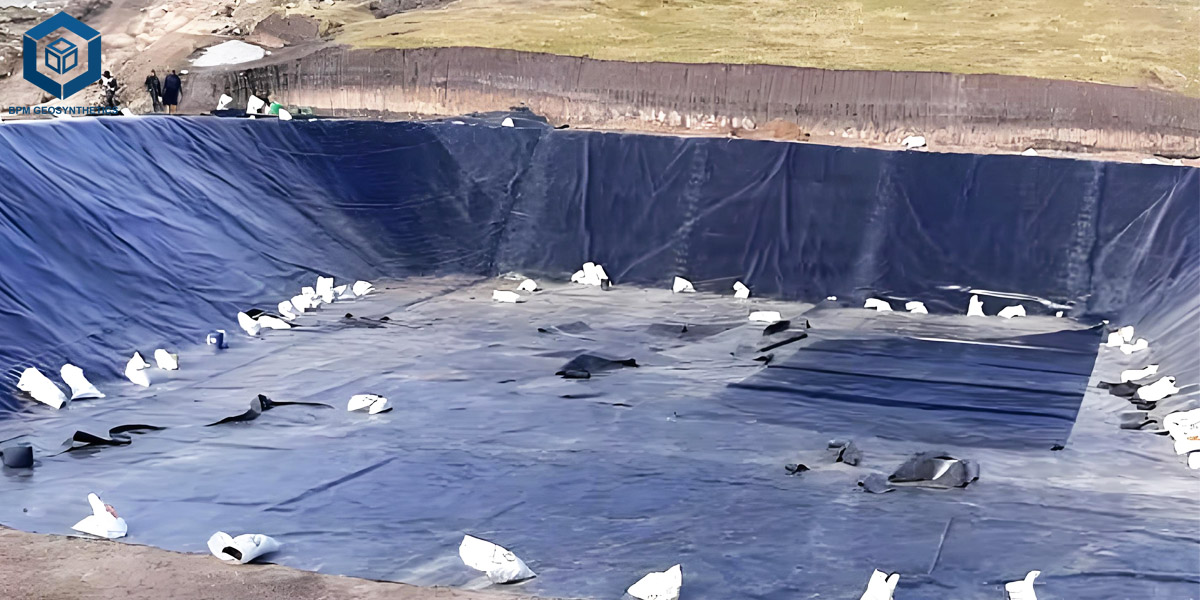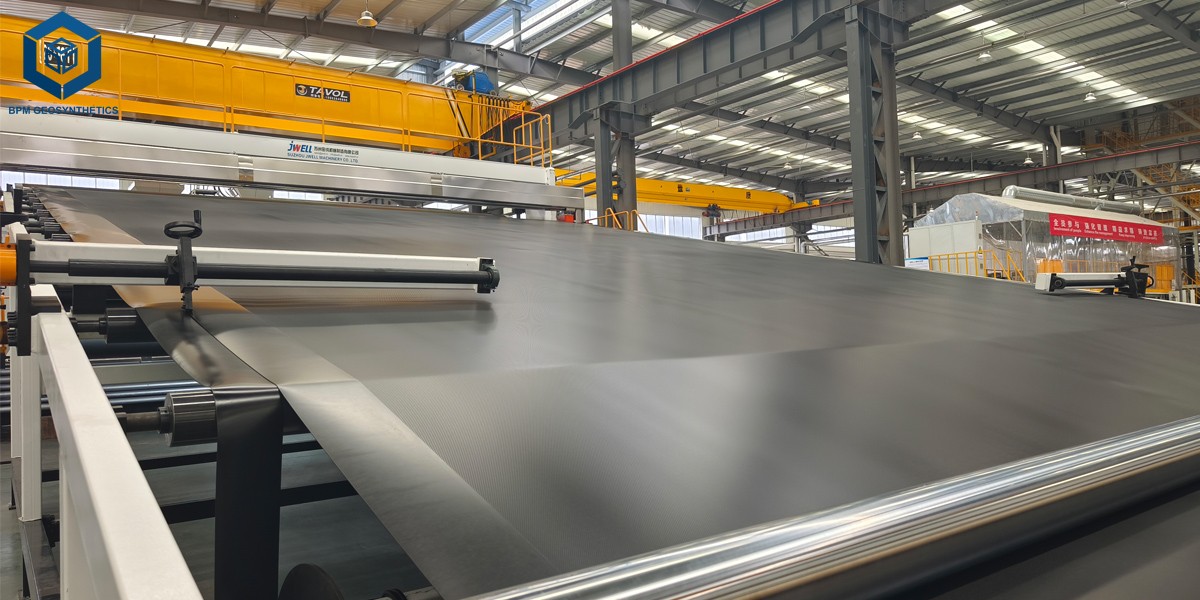Ultimate Guide to Landfill Liner Cost
Effectively managing waste in a safe manner necessitates robust environmental protection systems, with the landfill liner being one of the most vital elements. The price of a landfill liner is affected by various factors, such as the type of material, thickness, installation techniques, project size, and long-term maintenance needs. It is crucial for engineers, contractors, and project owners to comprehend these cost determinants in order to achieve a balance between environmental compliance and budget efficiency. In this comprehensive guide, we will analyze the primary factors influencing landfill liner cost, compare various options, and offer insights to assist you in making well-informed decisions for your project.
1. Introduction to Landfill Liner Products
A landfill liner is a crucial geosynthetic barrier intended to prevent leachate from polluting soil and groundwater. Usually constructed from HDPE geomembrane, landfill liners provide outstanding chemical resistance, low permeability, and long-lasting durability in extreme environmental conditions. They act as an essential layer in contemporary landfill construction, ensuring adherence to environmental regulations and safeguarding natural resources. Offered in various thicknesses and specifications, landfill liner material can be tailored to fulfill project needs for municipal solid waste, hazardous waste, and industrial waste landfills. By integrating strength, flexibility, and dependability, hdpe landfill liner deliver both cost-effective and sustainable solutions for waste containment.
2. Key Factors Influencing the Landfill Liner Cost
2.1 Type of Material for Landfill Liner
The choice of liner material is the primary factor affecting the overall cost, as it impacts performance, longevity, and regulatory compliance.
2.1.1 HDPE (High-Density Polyethylene) Landfill Liner
This hdpe landfill liner material is recognized as the industry standard for landfill liners. It boasts high durability, resistance to ultraviolet rays, and exceptional chemical resistance, making it suitable for long-term use. Although HDPE incurs a higher initial expense compared to clay, its extended service life and minimal maintenance requirements lead to reduced lifecycle costs.
2.1.2 LLDPE (Linear Low-Density Polyethylene) Landfill Liner
More flexible than HDPE, LLDPE liner is particularly advantageous for installations that necessitate high elongation, such as locations experiencing settlement or irregular configurations. However, it is marginally less puncture-resistant and may necessitate additional protective layers, which contributes to the overall expense.
2.1.3 Geosynthetic Clay Liners (GCL) Landfill Liner
These GCL liner is produced in factory-manufactured rolls that integrate bentonite clay with geotextiles, forming a thin yet highly impermeable barrier. GCL geosynthetic clay liner is lighter and simpler to install than compacted clay liners, which helps to lower transportation and labor costs, although they may not perform optimally in highly acidic or saline conditions.
2.1.4 Composite Landfill Liner
These systems integrate a geomembrane with either a clay or GCL layer to offer maximum protection. They are regarded as best practice for hazardous waste landfills, but they require a higher initial investment due to the complexity of materials and installation processes.
2.2 Landfill Size & Design
The physical attributes of the landfill have a direct impact on the quantity of liner material necessary and the complexity of the installation process.
- Landfill Size: A larger landfill footprint necessitates a greater volume of geomembrane or clay liner. This not only escalates material costs but also increases transportation and installation expenses.
- Liner System Complexity: Certain regulatory frameworks mandate the use of double landfill liner system or multi-layer composite liners. The implementation of these systems can more than double costs due to the requirement for both primary and secondary liners, leak detection systems, and drainage layers.
- Slope and Contouring: Landfills seldom present as flat surfaces. The presence of steep slopes, corners, and irregular contours complicates geomembrane liner landfill installation, necessitating additional labor hours and meticulous welding techniques to mitigate stress points and leakage risks.
2.3 Landfill Liner Regulatory Requirements
Government regulations play a pivotal role in determining the acceptable type of liner system.
- United States (EPA Subtitle D): Regulations governing municipal solid waste landfills stipulate a composite liner system that includes a minimum of 60-mil HDPE geomembrane over two feet of compacted clay. This requirement elevates material and installation costs in comparison to simpler designs.
- European Union (EU Landfill Directive): In alignment with EPA standards, the EU directive enforces stringent requirements regarding liner in landfill thickness, permeability levels, and leak detection systems, which contribute to increased overall costs.
- Hazardous Waste Landfills: Facilities designated for the storage of hazardous or toxic materials are subject to more stringent regulations. These sites necessitate multiple liner systems, thicker landfill plastic liner geomembranes, and advanced monitoring, which considerably heighten expenses relative to municipal waste projects.
2.4 Landfill Liner Installation & Labor Cost
Even when the costs of landfill materials are fixed, the expenses associated with installation can fluctuate significantly due to site conditions, labor rates, and the expertise of contractors.
- Labor Costs: It is crucial to have skilled liner installers to guarantee proper welding and seaming. The hourly rates generally range from $20 to $50, influenced by the region and the labor market. Projects located in remote areas or regions with high labor costs may experience a considerable rise in expenses.
- Site Preparation: Prior to the installation of the plastic liner landfill, the subgrade must be adequately prepared through processes such as excavation, grading, and compaction. This preparation is essential to prevent punctures and ensure stability, although it incurs additional time and equipment costs.
- Welding and Seaming: Geomembrane sheet is supplied in large rolls that need to be heat-welded on-site. The creation of leak-proof seams necessitates specialized welding machines and certified technicians. This procedure is labor-intensive and constitutes a significant cost factor in geomembrane projects.
- Quality Assurance & Testing: Inspections conducted after installation, including air pressure testing of seams and leak detection surveys, contribute to the overall labor and testing expenses.
2.5 Transportation & Logistics Landfill Liner Cost
Logistics is frequently underestimated but can represent a considerable portion of project costs, particularly for large-scale landfills.
- Distance from Manufacturer: When the landfill site is situated far from geomembrane production facilities, freight costs can increase substantially, especially for international shipments.
- Material Handling: HDPE geomembrane roll is substantial and heavy, necessitating the use of cranes, forklifts, or other heavy machinery for unloading and placement. This requirement leads to additional equipment rental and operator fees.
- Storage and Staging: Projects may necessitate temporary on-site storage for geomembrane for landfill rolls, which requires protective coverings and secure handling to avert material damage prior to installation.
- Remote Sites: In rural or isolated locations, inadequate road access and limited infrastructure can elevate both transportation time and fuel expenses.
3. Where to Use Geomembrane as Landfill Liner?
Geomembrane liner play a vital role in landfill engineering by managing leachate, safeguarding groundwater, and ensuring compliance with environmental regulations over the long term. Their application varies based on the specific landfill layer and its intended function.
3.1 Landfill Liner for Primary Liner
The primary liner serves as the initial barrier between waste and the surrounding environment.
- Function: Geomembrane sheet prevents leachate from penetrating the soil and contaminating groundwater.
- Material Choice: Generally, HDPE liner is preferred due to its excellent chemical resistance, low permeability, UV stability, and extended service life. In cases where enhanced flexibility is required, LLDPE may be utilized.
- Construction Features: The geomembrane is installed over a prepared subgrade or compacted clay, with seams welded together using heat welding or extrusion welding to form a continuous barrier.
- Landfill Liner Cost Consideration: Primary liners represent the most crucial component of the landfill system. Although the costs associated with materials and welding are significant, they offer long-term environmental protection, thereby reducing potential remediation costs.
3.2 Landfill Liner for Leachate Collection Layer
The leachate collection layer is positioned directly above the primary liner to effectively manage liquid waste.
- Function: It collects leachate produced from the decomposition of waste and directs it to collection sumps for treatment, while also preventing hydraulic pressure that could compromise the liners.
- Geomembrane Landfill Liner Role: By lining drainage channels, sumps, and conveyance areas with geomembranes, erosion, chemical damage, and infiltration into the primary liner are mitigated.
- Design Notes: This layer is sometimes integrated with geotextiles or drainage layers to shield hdpe membrane from punctures or abrasions during operation.
- Benefits: Landfill liner material guarantees the efficient removal of liquid waste, preserves the integrity of the primary liner, and reduces operational risks.
3.3 Landfill Liner for Temporary Cover
Temporary covers are utilized over active sections of landfills that are not presently receiving waste.
- Function: They serve to diminish rainfall infiltration, manage odors, limit leachate formation, and deter access by pests and vectors.
- Material & Installation: Lightweight impermeable geomembrane is preferred due to their ease of installation, removal, or repositioning as landfill operations evolve.
- Construction Advantages: They can be rapidly deployed over extensive areas and can be combined with sandbags or anchor trenches to withstand wind uplift.
- Cost Efficiency: They safeguard active landfill cells without necessitating permanent infrastructure, aiding in leachate control and reducing operational expenses.
3.4 Landfill Liner for Final Cap
The final cap serves as the permanent closure layer for completed landfill cells.
- Function: It seals the landfill to avert water infiltration, decrease leachate formation, manage gas emissions, and facilitate post-closure land use.
- Material Selection: Impermeable geomembrane liner is commonly employed due to their long-lasting chemical and UV resistance. They may be paired with drainage layers, geotextiles, and soil/vegetation covers for enhanced protection.
- Installation Considerations: The installation must be continuous, properly welded, and safeguarded with a cushion or soil layer to prevent punctures. Effective integration with gas venting and drainage layers is crucial.
- Long-Term Benefits: It guarantees environmental safety for many years, minimizes post-closure maintenance, and adheres to regulatory standards.
Geomembrane landfill liner is employed throughout a landfill—from the primary liner at the base, to leachate collection channels, temporary covers during active operations, and the final cap at closure. HDPE impermeable liner adaptability, chemical resistance, and durability render them essential for contemporary landfill engineering, ensuring long-term protection of soil and groundwater while complying with environmental regulations.
4. Geomembrane: The Most Essential Material in Landfill Liner Systems
Geomembranes, particularly HDPE geomembranes, serve as the fundamental material in contemporary landfill liner systems. Their vital function is demonstrated through six indispensable engineering aspects, which guarantee environmental protection, long-lasting durability, and adherence to regulatory requirements.
4.1 Unmatched Superiority in Physical Barrier Functionality
HDPE geomembranes create a seamless, impermeable barrier that entirely separates waste from adjacent soil and groundwater.
In contrast to clay or geotextile liners, geomembranes offer consistent thickness and uninterrupted coverage, thereby eliminating any weak points or gaps.
Their remarkable flexibility enables them to adapt to slopes, uneven surfaces, and minor settlements without fracturing, thus providing dependable long-term safeguarding.
4.2 Extremely Low Permeability
High density polyethylene geomembrane attain remarkably low permeability, significantly surpassing that of natural materials.
Permeability coefficient: ≤1×10⁻¹³ cm/s, which is six orders of magnitude lower than that of compacted clay.
Leakage control: Corresponds to an annual leakage of <0.03 mm, effectively achieving nearly perfect hydraulic isolation.
This characteristic is crucial for averting leachate migration and groundwater pollution.
4.3 Indicators of Mechanical Strength
HDPE geomembranes landfill liner demonstrate outstanding mechanical characteristics when compared to natural liners:
Property | HDPE Membrane (2.0mm) | Natural Material Comparison |
Tensile Strength | ≥25 kN/m | Clay <1 kN/m |
Puncture Resistance | ≥500 N | GCL ~200 N |
Elongation at Break | ≥700% | Clay fails immediately upon cracking |
The high tensile strength and puncture resistance of reinforced polypropylene geomembrane enable them to endure installation stress, settlement, and heavy equipment traffic.
The extreme elongation at break guarantees durability even in the face of soil movement or localized deformation.
4.4 Unmatched Chemical Stability
HDPE geomembranes HDPE landfill liner exhibit exceptional resistance to chemical attacks.
They preserve their integrity against acids, alkalis, and organic solvents typically present in landfill leachate.
The minimal interaction with chemicals diminishes the risk of membrane degradation, thereby guaranteeing long-term protection.
4.5 Corrosion Resistance
Geomembranes are capable of enduring even the most severe leachate conditions:
PH range 1–14, maintaining over 90% of their strength after 20 years in 40°C concentrated leachate.
Heavy metal ions such as Pb²⁺ and Cd²⁺ demonstrate an adsorption permeability of less than 0.001%, thus preventing environmental contamination.
This level of corrosion resistance surpasses that of clay or GCL liners, which are more vulnerable to chemical attacks.
4.6 Aging Lifespan Validation
HDPE geomembranes exhibit remarkable long-term durability, as confirmed by accelerated aging tests:
Tests conducted by the German IKT Institute show that carbon-black-stabilized HDPE membranes can endure 3,000 kLy of UV radiation, which is equivalent to 30 years in tropical climates.
Performance retention: The primary mechanical and chemical properties degrade by less than 15%, ensuring dependable operation throughout the landfill’s lifecycle.
5. Additional Landfill Liner Cost
In addition to the primary polyethylene geomembrane liner membrane hdpe material and its installation, landfill projects also face supplementary expenses related to supporting systems and quality assurance. These additional components are crucial for ensuring the performance of the liner, safeguarding the environment, and adhering to regulatory requirements.
5.1 Leachate Collection System
- Function: The leachate collection system is positioned above the primary liner to gather and safely dispose of liquid waste from the landfill.
- Components: It generally consists of perforated pipes, drainage layers (such as gravel or geocomposite), sumps, and pumps.
- Cost Implications: The installation and connection of these components incur additional material and labor costs. Well-designed systems help prevent the buildup of hydraulic pressure, mitigate the risk of liner damage, and facilitate effective leachate management.
5.2 Landfill Protective Geotextile Layer
- Function: A geotextile layer is installed between the geomembrane and the overlying drainage or waste material to avert punctures, abrasion, and mechanical damage during both installation and operation.
- Material & Design: Nonwoven geotextiles are frequently utilized due to their cushioning characteristics and permeability. The thickness and density are chosen based on the load conditions of the landfill.
- Cost Consideration: Although this represents an additional material expense, the protective layer significantly extends the lifespan of the geomembrane, thereby decreasing maintenance or repair costs over time.
5.3 Landfill Liner Quality Control & Testing
- Purpose: This process ensures that the liner system is installed properly and functions as intended, complying with regulatory standards.
- Key Activities: This includes seam inspections, vacuum or air pressure testing, visual assessments, and thorough documentation of all welding and installation activities.
- Cost Impact: This requires specialized technicians, testing equipment, and labor hours. While it incurs an initial cost, quality control significantly reduces the risks of leaks or failures, thus preventing much higher remedial costs in the future.
While geomembrane materials and their installation represent the primary expenses in a landfill liner system, supplementary systems such as leachate collection, protective geotextile layers, and quality assurance/testing contribute significant yet essential costs. These additional elements are crucial for ensuring the long-term safety, functionality, and regulatory compliance of the landfill, thus categorizing them as necessary investments rather than optional expenditures.
6. How to Reduce Landfill Liner Cost ?
Effectively managing landfill liner costs necessitates a blend of material optimization, construction efficiency, and long-term maintenance strategies. By implementing these approaches, project owners can uphold environmental safety while reducing expenses.
6.1 Landfill Liner Material Optimization
Utilize Geosynthetic Clay Liners (GCL): In areas of the landfill deemed low-risk, partial clay layers may be substituted with GCL.
- Cost Benefit: This replacement can yield savings of approximately 20–30% in material costs, as GCL is lighter, easier to manage, and lessens excavation needs.
- Performance Consideration: GCL offers superior hydraulic isolation, rendering it appropriate for less critical zones without undermining the overall effectiveness of the liner.
- Replace Imported HDPE with Domestic Products: High-quality domestic HDPE geomembranes can serve as substitutes for imported rolls.
- Cost Benefit: This can lead to a reduction in material costs by 15–20%, while still providing comparable chemical resistance and durability.
- Additional Advantage: Sourcing locally diminishes transportation and logistics expenses, as well as shortens delivery timelines.
6.2 Construction Efficiency Improvement
- Prefabricated HDPE Panels: The use of factory-prefabricated geomembrane panels minimizes the need for on-site welding.
- Cost Benefit: The labor associated with on-site welding can be decreased by 40–50%, thereby reducing both labor hours and quality control expenses.
- Quality Advantage: Prefabrication guarantees uniform seam quality and reduces the likelihood of installation errors.
- Mechanized Installation: The use of machinery such as cranes, spreaders, and rollers facilitates the positioning and laying of geomembrane rolls.
- Cost Benefit: Labor hours can be decreased by 25–35%, which enhances productivity and reduces overall construction expenses.
- Efficiency Advantage: Mechanized techniques minimize human error and enable quicker completion of extensive landfill areas.
6.3 Long-term Maintenance Strategy
- Regular Seam Inspections: Conducting routine inspections of welded seams aids in the early detection of minor issues.
- Cost Benefit: This practice prevents the need for large-scale leak repairs, which can be considerably more costly than preventive maintenance.
- Environmental Advantage: It ensures the integrity of the liner system throughout its entire service life.
- Post-Closure Vegetation Cover: Following the closure of a landfill, the application of a vegetation cover mitigates rainwater infiltration.
- Cost Benefit: This approach reduces leachate generation by 60–80%, thereby lowering ongoing collection and treatment expenses.
- Sustainability Advantage: It improves site stabilization, prevents erosion, and enhances aesthetics for potential land reuse.
Reducing landfill liner costs does not imply a compromise on safety. By optimizing materials, enhancing construction efficiency, and adopting preventive maintenance, project owners can realize substantial cost savings while ensuring long-term environmental protection and adherence to regulatory standards.
7. Conclusion
The expenses associated with landfill liner is influenced by the selection of materials, regulatory requirements, and the scale of the project. HDPE geomembrane is the most widely used, whereas composite liner systems offer enhanced protection at a higher price point. Effective management of costs can be achieved through careful planning, expert installation, and ongoing maintenance.
For customized solutions and dependable products, The Best Project Material Co., Ltd (BPM Geosynthetics) provides premium geomembrane, Geosynthetic Clay Liner (GCL), and composite liner, along with professional assistance for your landfill project.






